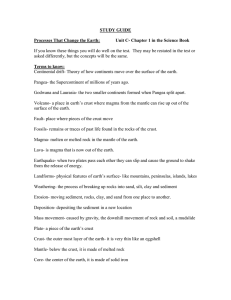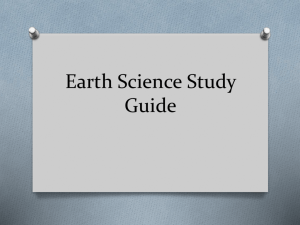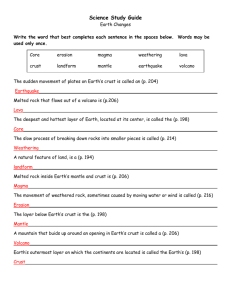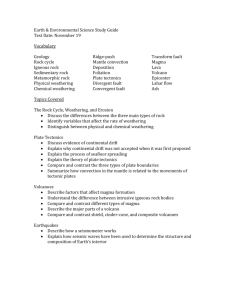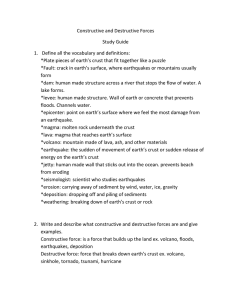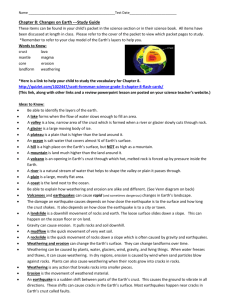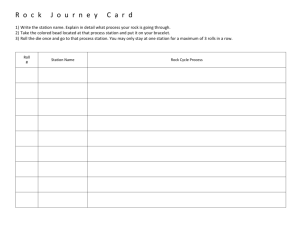File
advertisement
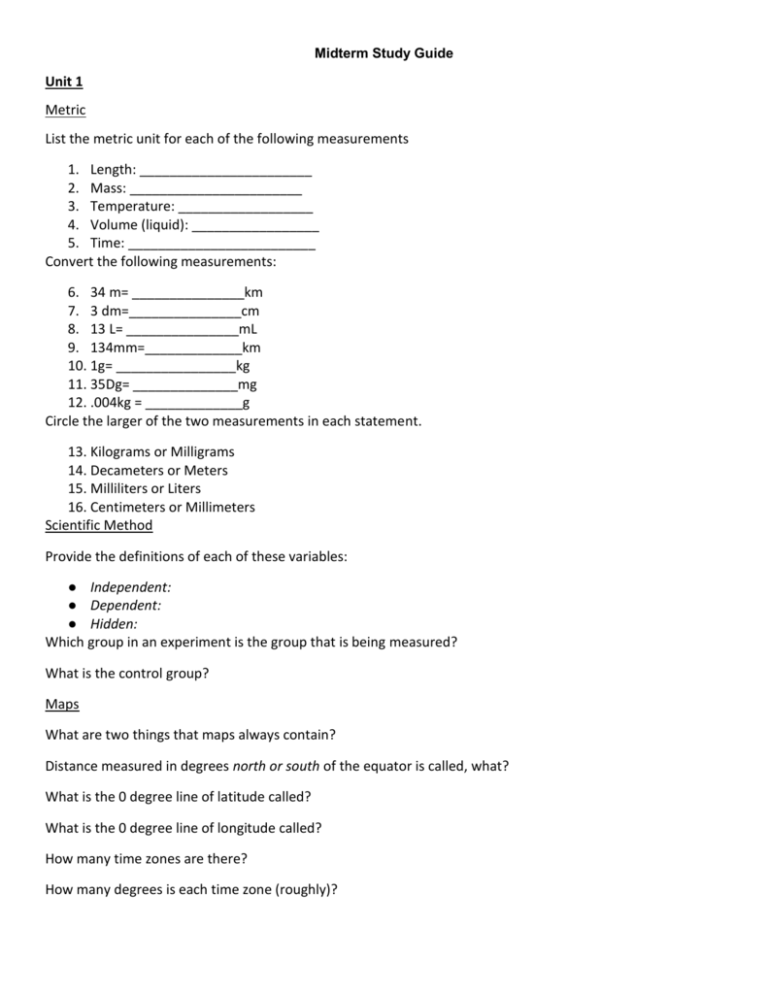
Midterm Study Guide Unit 1 Metric List the metric unit for each of the following measurements 1. Length: _______________________ 2. Mass: _______________________ 3. Temperature: __________________ 4. Volume (liquid): _________________ 5. Time: _________________________ Convert the following measurements: 6. 34 m= _______________km 7. 3 dm=_______________cm 8. 13 L= _______________mL 9. 134mm=_____________km 10. 1g= ________________kg 11. 35Dg= ______________mg 12. .004kg = _____________g Circle the larger of the two measurements in each statement. 13. Kilograms or Milligrams 14. Decameters or Meters 15. Milliliters or Liters 16. Centimeters or Millimeters Scientific Method Provide the definitions of each of these variables: ● Independent: ● Dependent: ● Hidden: Which group in an experiment is the group that is being measured? What is the control group? Maps What are two things that maps always contain? Distance measured in degrees north or south of the equator is called, what? What is the 0 degree line of latitude called? What is the 0 degree line of longitude called? How many time zones are there? How many degrees is each time zone (roughly)? What type of map shows three dimensions by using contour lines? Index contours occur every ______ lines to show the elevation. What do hachure marks show? The acquisition of information about an object or phenomenon without making physical contact with the objects is known as __________________. (examples: sonar, radar, satellites) Unit 2 1. What are the three major types of tectonic boundaries? 2. What is an example event/landform that takes place at each one? 3. What is the difference between oceanic-continental and continental-continental convergent boundaries? 4. Along what type of boundary is crust neither created nor destroyed? 5. Which plate boundary holds the most severe earthquakes? 6. What kind of process causes the plates to move? 7. What are subduction zones and at what type of plate boundary do they occur? 8. How did the Himalayan mountains occur? 9. Is the crust near ocean ridges younger or older compared to crust near deep-sea trenches? 10. What is denser, oceanic crust or continental crust? 11. What is magma? 12. What are the three types of magma? 13. What are the factors that affect magma explosivity? 14. What is viscosity and how does it affect explosions? 15. What is outgassing? 16. What is strain? 17. What are the types of waves and which ones arrive first? 18. What is the epicenter of an earthquake? 19. Distinguish between normal, strike-slip and reverse faults (define each). 20. What type of fault is a result of horizontal shear? 21. Name the layers of the Earth, with the smallest density first and ending with the highest in density. Unit 3 1. What is the rock cycle? 2. What are the 4 factors that influence rock change? 3. When magma comes to Earth’s surface and cools, it creates an _________________________. 4. Sediments settle and compact to form _________________ rocks. 5. What energy source helps form sedimentary rocks? 6. What is weathering? 7. What are the two types of weathering? 8. What factors influence mechanical weathering? 9. What are some sources of chemical weathering? 10. When oxygen reacts to another substance, it is called ___________________. 11. Why is the statue of liberty green? 12. What is the name of the scale that measures how acidic or basic a substance is? 13. On the scale, a 0-6.9 is an _______________, a 7 is ________________, and a 7.1-14 is a ______________. 14. What are some examples of acids? 15. What are some examples of bases? 16. What is acid rain? 17. What is the pH of rainfall? 18. What are the factors that affect rates of weathering? 19. What is erosion? 20. What is deposition? 21. What are the three agents of erosion? 22. Which erosion agent is least affective? 23. Loose covering of broken rock particles and decaying matter is called _________________. 24. Each layer of a soil profile is called a soil _____________________. 25. What does each horizon contain? 26. Vegetation acts an an ____________________ for soil. 27. Downslope movement of loose sediments and weathered rock because of gravity is called ________________. 28. What are the variables that affect mass movements? 29. What affect does water have on mass movements? 30. What are the 6 types of mass movements and define each.
